The oral cavity is a unique division of the human body. It performs several important functions, without which no normal life. One of the main processes occurring in the oral cavity is the primary grinding and the digestion of food.
Biting, shredding, and the formation of the bolus is done mainly by the teeth, cheeks and tongue. At the same time carbohydrate food components under the action of amylase are broken down into smaller structural units. Thus, the initial stages of digestion occur in the mouth.
The oral cavity is the protective barrier of the body. It has the highest diversity of microflora. It includes bacteria, viruses, fungi, which by their way of life can be obligate (permanent inhabitants of the oral cavity) and facultative (opportunistic). The balance of the microflora and prevents the development of pathogenic microorganisms and the emergence of inflammatory and destructive diseases.
Respiratory function of the mouth is manifested mainly with increased loads on the body. As a rule, in a tense state, a person inhales air through the nose and exhales through the mouth. This improves the efficiency of gas exchange.
Receptor function of the oral cavity is realized due to the large number of receptors located in the mucosa, the periodontium of the teeth and on the back of the tongue. It allows you to adjust the pressure of chewing, to feel the temperature of the food, its texture and taste.
The ability to play sounds derived mainly from the tongue, lips and teeth. With proper interaction of these body parts a person has the ability to Express their thoughts and emotions verbally method.
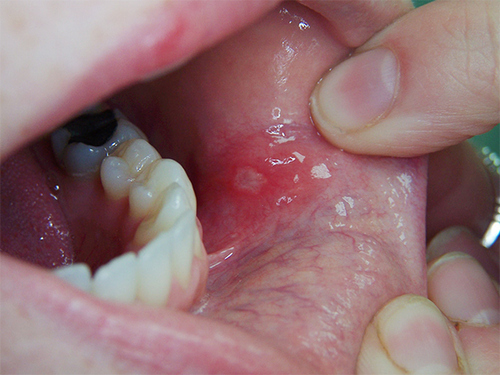
Causes of oral cancer
The functional complexity of the oral cavity involves the simultaneous occurrence in it of many biophysical and biochemical processes. Various functions, direct contact with the environment creates a high risk for the occurrence of pathological processes in the oral cavity.
The main risk factor for the occurrence of oral cancer is a chronic damaging agent. It can have any origin, but the pathogenesis of the disease is always the same. First, there is damage, or alteration. Then the activation of the body’s defense system in the form of inflammation, the formation of cornified epithelium, or hyperplasia of the soft tissues in the area of damage. If damaging factor for a long time does not clear, the mechanism of cell division fails. As a result, they begin to divide more rapidly, generating a large number of defective and non-functional cells.
Last spread through the blood and lymph system to various parts of the body, forming metastases. In the end, a tumor arising in the oral cavity may go into the lungs, liver, brain and other organs. Cancer cells perform no useful functions, because they are immature. However, their negative impact is difficult to overestimate. Almost any organ in which cancer cells gradually lose their functionality and eventually just stops working. Thus, the main cause of cancer is a violation of the mechanism of cell division, and the leading risk factor is chronic damage.
Mechanical trauma
The simple to understand risk factor is chronic mechanical damage. It can occur in people of any age, gender and socio-economic status. For example, a child with an abnormal bite, or improperly spaced teeth can permanently injure the mucous membrane of the oral cavity. In place of the damaged mucosa will begin to orogovevshi, which significantly reduces the symptoms of trauma. However, the damaging factor will still injure soft tissue, causing constant regeneration, that is cell division.
Some people have a destroyed teeth with sharp edges. If, for various reasons, they do not go to the dentists, then you may be a chronic injury of the tongue, cheeks and lips. The main problem of the chronic damage that partially it “negates” the body by compensatory reactions. As a result, the pathological process is protracted, ill-defined character. This helps to ensure that people gradually got used to him and was trying to eliminate.
Dentures made in the wrong technologies can cause even combined damage. Mechanical trauma occurs when incorrect fit of the prosthesis to the mucosa. The result is a zone of high stress and friction. If during the polymerization of the plastic prosthesis was broken technical process, the prosthesis may be a monomer. The particles have a toxic effect on the mucosa, causing inflammation and allergic reactions. If properly welded and loose fitting dentures to use it for a long time, there will inevitably be pressure ulcers, erosions, ulcers, inflammatory reaction. All of these pathological elements and processes can cause cancer of the oral cavity.
It is also worth noting the traumatic effects of braces. Today orthodontics is a very popular field of dentistry among the population. Patients adolescence increasingly set braces to treat malocclusions or dentitions. However, castles and orthodontic arc system can have a significant traumatic effect on the soft tissues of the oral cavity. And when you consider that in most cases, braces are used continuously for two years, it is easy to imagine what consequences may arise in a patient.
One of the traumatic factors, which rarely pay attention, is worn out ceramic artificial crown. Metal fittings prefers a lot of people because of their reasonable cost and aesthetic qualities. However, not everyone knows that a smooth surface is a sintered surface is created using a thin layer of so-called “glaze”. In the course of long functioning crowns the glaze may wear off, and then exposes the underlying ceramic layer. All the deep layers have a rough surface, resulting in frictional mucosa of the crown there is chronic injury.
Chronic stress, or rather their consequences, are one of the key places in the occurrence of mechanical damage to the mucosa. We are talking about biting the inner surface of the lips and cheeks. In the conditions of modern life, almost all people are in a state of stress. For some people it manifests itself in the form of insomnia, while others – in the view of the night grinding the teeth. But, very often stress is accompanied by biting of the mucosa of the lips or cheeks. This can happen consciously and subconsciously, however, the result in this case is one of chronic mechanical trauma.
Physical trauma
The most common form of physical trauma is thermal injury. Interestingly, most of the people are talking about acute thermal injury. This is not surprising because burns and frostbite occur clinically very bright and cause great harm to the human body. However, chronic mechanical trauma is no less dangerous and even more insidious. People who regularly consume hot foods causes injury to the mucosa of the oral cavity. As a result, increases the activity of the processes of keratinization, which is the first step on the way to the emergence of pathological lesions.
Another example of physical damage is galvanos. This is a disease that occurs as a result of the presence in the oral cavity of various metal alloys. For example, on a single tooth in a person installed the crown stainless steel and the other of cobaltchromium alloy. In such a situation between these alloys will occur electric current. And absolutely no matter how far apart these constructions.
They can be on different tooth rows, but the conductivity of human tissue, and saliva, contribute to the emergence of microcurrents in the mouth. Galvanos clinically manifested by burning sensation, a metallic taste in the mouth, redness, inflammation, sometimes erosions and ulcers in the mucosa. If dissimilar metals is not addressed, the symptoms will become chronic and may even lead to such pathologies as cancer of the oral cavity.
Chemical injury
Chronic chemical damage to the mucous membranes of the mouth often occurs in smokers and drug addicts. Legal availability of cigarettes helps to ensure that a huge number of people is the consumers of this product. The chemical composition of most tobacco products are so “rich” that they contain more than 12,000 chemical compounds. Furthermore, 196 of these substances are poisonous, 14 – narcotic and 69 carcinogens.
The majority of people suffering from cancer pathologies of the respiratory tract are smokers. And given that the smoke first enters the mouth, it becomes obvious harmful effect of tobacco smoke on the mucosa of the oral cavity. No less dangerous is chewing tobacco. Although many consumers naively believe that chewing tobacco is harmless. Argue that the fact that it contains no smoke and not into the lungs. This myth is easy to destroy, saying that chewing tobacco in the mouth actively chewed, and therefore a large proportion is absorbed through the mucosa. Moreover, with saliva particles of tobacco fall into the esophagus and stomach. This creates a risk of cancer in any part of the digestive system including the mouth.
You should pay attention to the wide spread of synthetic Smoking mixtures. Basically, they represent a problem for society because of its psychogenic effect. Inadequate human behavior under the influence of synthetic Smoking mixtures represents a high level of danger to the surrounding people. Moreover, the nervous system of the smoker over time, undergoes an irreversible degenerative changes.
In connection with these facts the sell similar Smoking mixes forbidden in most countries. But, manufacturers are trying to disguise their product under aromatic herbs, spices, tea, whereby he reaches the end consumer. The problem of carcinogenic effect in the background of the above may not be as impressive. However, a set of synthetic compounds that come in contact with the mucosa of the oral cavity undoubtedly has high carcinogenic properties. With regular use of synthetic Smoking mixtures a person can appear cancer of the oral cavity.
Chronic inflammation
A protracted sluggish inflammation of any localization poses a great danger to the body. A long course of the disease exhausts the immune system, increases the risk of diseases of other organs and systems. In addition, chronic inflammation is always a predisposing factor in the appearance of malignant tumors. Continuous cell division in a certain area can get out of control and cause the appearance of the tumor.
The mouth, as mentioned above, performs a number of functions and is subjected to continuous traumatic stress. Moreover, it is inhabited by a large number of conditionally pathogenic microorganisms. She also communicates with the environment, making the oral cavity is the first protective barrier against external pathological agents. These facts suggest that the development of the inflammatory process in the oral cavity is a common thing that everyone faces.
Stomatitis, gingivitis, glossitis, cheilitis, periodontal disease – all inflammatory diseases, which are localized in the oral cavity and can have a chronic course. We should also highlight gingivitis, periodontal disease and glossitis. In most cases these diseases are not amenable to local treatment, since their occurrence may be associated with pathologies of other organs and systems. Special attention is paid to endocrine, digestive and excretory system. If the primary pathology is not to eliminate the inflammation in your mouth can take years and cause cancer of the oral cavity.
Symptoms of oral cancer
Traditionally, the clinical picture of different diseases beginning with its first signs. However, in this case should first be considered precancerous. They very often precede the development of actual cancers of the oral cavity. Precancerous pathology are divided into facultative and obligate. Optional are characterized by a low degree of malignancy, and the obligate on the contrary, require urgent medical intervention, as they have a high degree of malignancy.
The optional precancer represented by the following diseases.
Leukoplakia is a flat – represented by the area of hyperkeratosis (increased keratinization). Most often appears on the background of the injury, Smoking, medication. Has a dull white or gray color, above the level of the mucosa does not rise. If scraping does not disappear. Clinically not worried. For correction of the condition should detect and eliminate the etiological factor.
Chronic ulcer of the oral cavity – most often occurs as a result of the injury. Located in close proximity to the traumatic agent (the shattered tooth, the edge of the denture, etc.). Form ulcers fits the contours of the traumatic subject. Periodically bleeding and sore. For epithelialization of the ulcer should eliminate the traumatic factor.
Lichen planus and lupus erythematosus (erosive and gipertroficescoy forms) is a chronic inflammatory autoimmune disease, the clinical picture which are quite diverse. Need advice of a dentist who specializiruetsya on the diseases of the mucous membrane of the oral cavity.
Chronic cracked lips – most often localized on the lower lip and have a vertical arrangement. With prolonged duration may deepen the cracks, seal the edges and malignancy. Chronic fissure requires the intervention of a dentist.
Meteorological and actinic cheilitis – inflammation of the vermilion border, provoked by adverse weather conditions. Meteorological cheilitis occurs most often in the cold season, and actinic in the warm, Sunny seasons. The disease is manifested by redness, formation of scales on the red border of the lips. If untreated, this process can be malignant.
Leukoplakia verrucous and erosive are optional precancer with high degree of malignancy. Respectively their names, verrucous leukoplakia manifests as a whitish excrescences, and erosive in the form of erosions.
Papilloma of the oral cavity is a benign tumor, which develops from papillae of connective tissue covered with epithelium. Shape – spherical, the tumor is in a narrow or wide foot, the color similar with the mucosa (sometimes takes on a whitish hue). The condition requires the consultation of a surgeon-dentist.
Cutaneous horn is a non – inflammatory disease, which manifests itself in the form of local keratinization. Despite the name, cutaneous horn may appear not only on the skin, but also on the red border of the lips, the keratinized mucosa. In addition to unpleasant tactile sensations cutaneous horn causes no symptoms, however, require surgical intervention.
Keratoacanthoma – a benign neoplasm, which manifests itself in the form of rounded pockets of keratinization with a slightly haunting center. The appearance of this lesion can be compared with the crater. The tumor is a facultative precancerous and requires immediate removal.
To obligate precancer to (which zlokacestvennoe very often) related Bowen’s Disease, warty precancer, cheilitis, Manganotti and limited precancerous hyperkeratosis
Bowen’s disease manifests itself in the form of restricted papulezne yellowish-scaly plaques. Has 4 forms of the clinical course, so it is diagnosed is quite difficult and requires expert intervention.
Cheilitis, Manganotti – obligate pre-cancer, which affects only the lower lip and manifests as erosions bright red color. Erosion around the red border of lips is hyperemic. Elements of the lesion can disappear and then re-appear for many months. To prevent malignancy, you need to correct the main etiological factor and achieve epithelialization erosion.
Limited premalignant hyperkeratosis – the last of obligate precancer in this list. Unlike previous formations, this pathology is more often seen in young and middle age. As the name suggests, it is possible to understand that the disease manifests itself in the form of hyperkeratosis lesion. As a rule, it is localized on the red border of the lips (usually the lower).
Stage
To assess the clinical stage of oral cancer there is no universal classification “TNM”. The name is an abbreviation which consists of first letters of words: “tumor” – a tumor, “nodus” – lymph nodes, “metastasis” metastasis. If the primary tumor cannot be assessed, then the designation “TX”. If evidence of a tumor are absent, the conclusion indicates – “T0”. The value of “T1-T4” is used for conditional record the size of the tumor. It should be noted the symbol “Tis” or “tumor in situ” – “cancer in place”.
This condition is a malignant tumor that had not yet spread to the underlying tissues. Evaluation of lymph nodes is carried out on a similar principle: “NX” – regional lymph nodes cannot be assessed N0 – metastases in lymph nodes do not exist, “N1-N3” – the degree of involvement of lymph nodes. The presence of metastases is analysed more succinctly: “M0”, no metastases, M1 – there are distant metastases.
Based on the data classification can be installed TMN of a malignant neoplasm. For example, Tis, or cancer in place, refers to the initial stage (zero). If the tumor does not extend beyond the organ in which it began its development, it refers to 1 or 2 stages, depending on size. If the tumor has gone beyond the “primary” organ, it refers to 3 stages. When the examination detected distant metastases and lymph nodes, the cancer is at stage 4.
Overview of the clinical picture of oral cancer
Cancer of the oral cavity often precedes one of the precancerous diseases discussed above. When malignancy benign tumors formed by cancer ulcer, infiltration or cancerous polyp. Insidious malignant tumors is that in the initial stages they do not cause the main symptom is pain. It pain syndrome most often causes a person to seek medical attention. Therefore, the initial stage of oral cancer can be painful, in contrast to the precancerous diseases.
Cancerous ulcer has differential characteristics that distinguish it from other ulcerative lesions (tuberculosis, syphilis, actinomycosis, ulcus decubitalis ulcer). First, a cancerous ulcer has dense, Velikobritanii edges that are raised above the level of the surrounding tissues. In some cases, the ulcer has a ragged, eroded edge. Form of education is often incorrect, although malignancy it was rounded or oval. The bottom of the ulcer deepened and covered with a grayish-white fibrinous coating.
It is worth saying that this coating may be covered with ulcers of any origin. However, after removal of the film exposed fine-grained granulation tissue, which when touched by the tool can bleed. This suggests that in the plague there is an active cell division, and is characterized by the malignant growth. Pain cancer ulcer causes. Most of these symptoms individually can be observed in other ulcerative lesions. But together they describe a distinct clinical picture that helps professionals to suspect the presence of cancerous ulcers.
A cancerous polyp is an abnormal growth of the mucous membrane, which has acquired a malignant course. At first glance it seems that the polyp in the mouth it’s hard not to feel. Because our language has a powerful tactile properties. However, much depends on the size and localization of the polyp. With small volume and being located in the hidden language areas of the oral cavity, a polyp may not cause any sensations. Even increasing gradually in size, the tumor may remain undetectable for humans. At a certain point, the patient still finds a foreign education in the mouth and ask for help.
Cancerous infiltration is the most difficult to diagnose form of cancer in which the tumor is located in soft tissues. It dominates the surrounding tissue, has specific clinical signs. Outwardly, he may not decide or have the appearance of swelling.
Cancer of the floor of the mouth
This type of cancerous lesions most often seen in the form of ulcerous-infiltrative form. Form of the ulcer, as a rule, depends on the location. When the location of the anterior floor of the mouth it will have a rounded shape. In the lateral parts of the ulcer has an elongated geometry. The classic symptoms of the disease, like all cancerous lesions of the oral cavity. That is, first there is a painful ulcer, which persists for a long time. It is a precancerous disease and often causes more complaints than cancer at initial stage. After the malignancy ulcerative defect is felt as a foreign object near the language.
The growth of the tumor, the patient’s condition worsens as the tumor to spread quickly on the tongue, lower jaw, muscle of the floor of the mouth and salivary glands. With the possible impaired speech, eating and saliva etc.
Cancer cheek
Cancerous lesion of cheek region due to mobility and frequent trauma. Almost everyone, by looking at the inner surface of the cheeks, you will see a white horizontal striped keratinization, which is located in the projection of the closing of the lips. Its presence is physiologically acceptable and common to most people. However, Smoking, alcohol, use of carcinogen-containing foods, genetic predisposition and living in ecologically polluted region create a complex of factors.
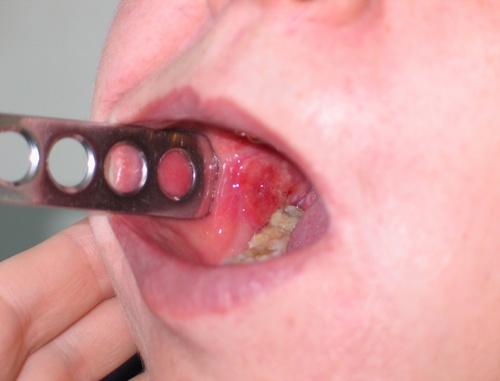
This set increases the risk of developing cancer of the oral cavity several times. Also worth noting is the front part of cheek region, more specifically the corners of the mouth. When chewing, talking, yawning, the expression of emotions, the skin of the corners of the mouth is constantly moving. This creates constant friction of the skin and mucous membrane of this region. If you ignore the symptoms of precancerous lesions, we can say that for cancer of the cheeks, the clinical picture resembles the one for cancer of the floor of the mouth.
That is, the person feels a foreign body and discomfort in the affected area. By increasing the volume of the tumor, a malignant process extends to chewing and medial pterygoid muscles, which are responsible for the function of closing the mouth. This leads to asymmetry movements of the lower jaw and the violation of the functions that are associated with the opening of the mouth.
Cancer of the mucous membrane of the alveolar process
Squamous cell carcinoma in this area is a fairly common problem. This is due to the direct contact of the removable denture with the mucous membrane of the alveolar process. Insolvent deformed and fixed structures are often chronic traumatic agent. If a cancerous ulcer or polyp is under the wash portion of the prosthesis, or under the basis of removable denture, the person may not even suspect the presence of cancer. In some cases, the patient feels pain while eating. With the progression of tumor growth may damage the mandibular bone. This process may affect the mandibular nerve, resulting in anesthesia of the teeth and skin of chin region. When the tumor in the upper jaw, the malignancy often spreads to the maxillary sinus.
Lip cancer
Lip cancer is a common problem in modern Oncology. Despite the fact that the lips are only partly relevant to the threshold of the oral cavity, neoplasms of this localization should be considered. The fact that the lips are those of the vestibule of the mouth, which most sent the harmful ways of humans. Retention of cigarettes it is due to the lips, hot products first contact with the lips. It is also worth adding such irritants as biting lips, body piercing, injection of cosmetic procedures, etc. lip Cancer is most often seen in the form of ulcers, which is dense and painless. Given a good visualization of this zone, lip cancer, 85% are diagnosed in the first or second stages.
Diagnosis of cancer of the oral cavity
Diagnosis of oral cancer begins with a medical history. The person tells the doctor when he first discovered the tumor. If the patient tumor had remained invisible, the expert specifies, whether in the field any symptoms (pain, discomfort, foreign body sensation). After that, the dentist carefully examining the lesion. If it’s an ulcer, we evaluated its edge, the center, the base and surrounding tissue. Also is determined by tenderness on palpation. During the examination a polyp pay attention to its color, size, shape, and structure.
In the case of suspected cancer of the oral cavity, the patient is made fence material for cytological examination (smear, is scraping or puncture). This analysis allows us to assess the structure of the cells (size, shape), their location, the ratio of organelles and cytoplasm, i.e. to detect cellular atypia, which is characteristic of malignant neoplasms.
Histological examination is a more invasive method of diagnosis. It is performed in cases when there are the majority of the clinical signs of a malignant tumor. In such a case is the fragment of the tumors surgically and sent for pathologic study. The pathologist assesses the nature of tumor growth and produces the medical report.
Treatment of oral cancer
Treatment of cancer of the oral cavity corresponds to the modern principles of Oncology. They suggest the use of three main methods: surgery, chemotherapy and radiation. Most often these techniques are used in combination, as none of them has a total anti-tumor effect. Moreover, treatment should be aimed not only at removing the tumor, but also on preventing recurrences.
Surgery is performed in a classical variant: the tumor is removed, and 2-3 cm of healthy tissue around the tumor. This stage is very important, as incomplete removal of tumor tissue can further provoke the development of tumors. While difficult surgical operation will be useless.
Chemotherapeutic method is a General therapeutic method, and is applied in the presence of metastases. Various anticancer drugs are combined with each other and are introduced by a special program. It should be noted that chemotherapy enhances the effect of radiotherapy, as occurs radiosensibility.
The ray-tracing method based on the effects of gamma radiation on the cancer cells. A focused beam of gamma particles penetrate into a malignant tumor and destroys cancer cells. This method is very effective and is performed in 90% of cases. However, in most cases he is not able to cope with cancer of the oral cavity, therefore, is part of a combined treatment.
Some people are convinced that various tumors can be treated at home. Aware of cases where patients tried to cauterize the tumor, the remove yourself or just waiting for her to come alone. Also some people consider the appropriate use of herbal medicine, homeopathy and folk remedies. However, it is worth noting that these tools can be effective in other clinical situations, but not for cancer of the oral cavity. Malignant tumors even at the present level of development of medicine are a serious challenge for both doctor and patient.
Even with a full Arsenal of anticancer agents, it is not always possible to completely eradicate a malignant process. Therefore, the ideal remedy for cancer has not yet been invented. Also open remains the question of how to live with cancer of the oral cavity. But it should be said that each person is unique, and no one knows how a body will react to the appearance of a malignant tumor. Therefore, the main task of every person is to minimize risk factors, strengthening the body and healthy lifestyle.
Prevention
Statistics say that most often cancer of the oral cavity affects people over 40, who make up more than 95% of all suffering. However, this does not mean that young people have not found this pathology. Also worth mentioning that 75% of patients with malignant tumors have a bad habit associated with Smoking or alcohol consumption. Previously, there was a significant male predominance among patients. This is due to the fact that the majority of alcohol-dependent and Smoking were males. However, it is now established that the number of women with cancer of the oral cavity increased significantly. To date, the ratio of men and women is approximately 2:1.
To minimize the risk of disease, it is important to always strive to maintain a healthy lifestyle. You should get rid of bad habits and find ways of dealing with stress. You also can not forget about regular visits to the dentist for a checkup. In case of suspicious entities, you should immediately consult a specialist.

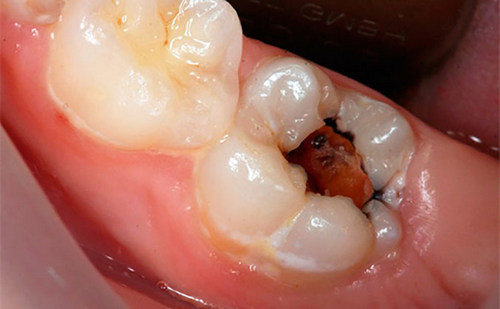
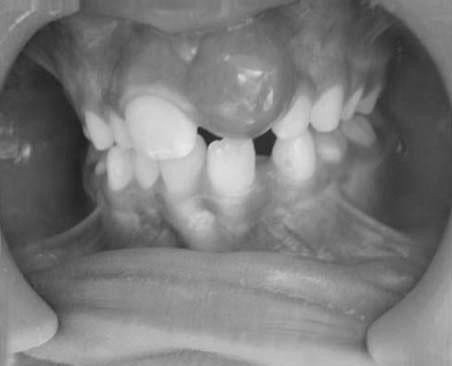
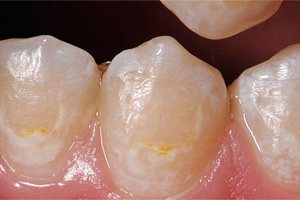
Como comprar contrareembolso comprar online es seguro.
Im obliged for the blog article.Really thank you! Much obliged.
I have been surfing online more than 3 hours today, yet I never found any interesting article like yours. It is pretty worth enough for me. In my view, if all website owners and bloggers made good content as you did, the net will be a lot more useful than ever before.
With proper interaction of these body parts a person has the ability to Express their thoughts and emotions verbally method.
Hi would you mind sharing which blog platform you’re using?I’m planning to start my own blog in the near future but I’m having a hard time making a decision between BlogEngine/Wordpress/B2evolution andDrupal. The reason I ask is because your layout seems different then most blogs and I’m looking for something completely unique.P.S Sorry for being off-topic but I had to ask!
I don’t know about the listicles.. maybe kinda forced.
Great paintings! This is the kind of info that are meant to be shared across the internet. Shame on the seek engines for now not positioning this post upper! Come on over and seek advice from my web site . Thanks =)
I can tell that you may be trying to avoid arguing with your post, but please remember that the unpopular details often promote healthy debate when argued with respect..and this is your page not a democracy- allow your “take” set the tone here!
I have been reading your articles Cancer of the oral mucosa Medical diagnosis and they are pretty useful for me to read something new and special. And You can also view our web also bulk whatsapp marketing tool.
!That could be a bit off the mark. Can you clear up some misconceptions for me please? 🙂
My brother recommended I might like this website. He was totally right. This submit truly made my day. You cann’t believe simply how a lot time I had spent for this info! Thank you!
You really make it seem so easy with your presentation but I find this matter to be really something that I think I would never understand. It seems too complex and very broad for me. I am looking forward for your next post, I’ll try to get the hang of it!
I like the helpful information you provide in your articles. I抣l bookmark your blog and check again here frequently. I’m quite certain I will learn many new stuff right here! Good luck for the next!
You know if you are not on Instagram, you should be. I know you can’t put text up, but just throw in a few pics and build an audience there. I think you’d find a ton of people who would be super interested in your blog here.